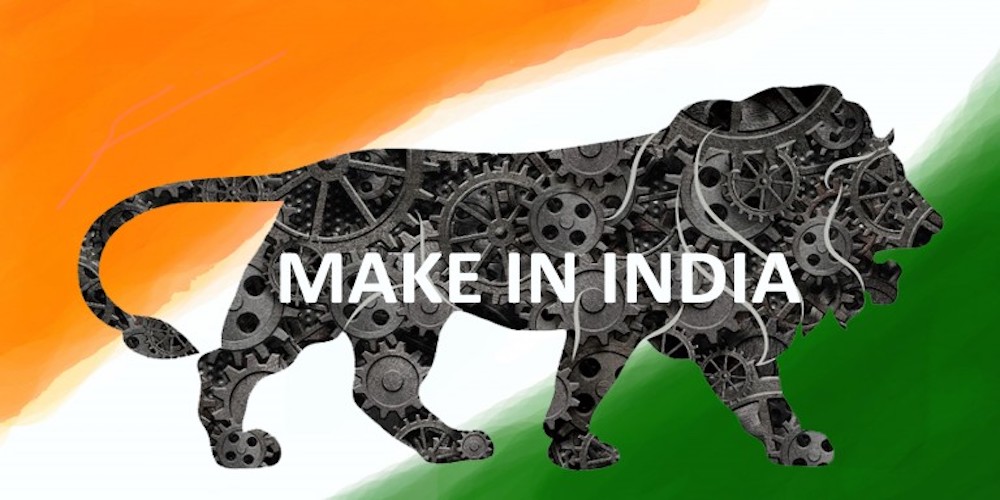Make in India on Course

How has the ‘Make in India’ initiative that was launched on 25th September, 2014 to facilitate investment, foster innovation, build best in class infrastructure, and make India a hub for manufacturing, design, and innovation performed?
There is no doubt that the scheme is well intentioned. It is one of the unique ‘Vocal for Local’ initiatives that promoted India’s manufacturing domain to the world.
To erode unemployment from India free and bring development, this policy was the urgent need. We can reduce poverty to a great level by solving the unemployment issue for youths. The country’s economy will surely achieve great heights after the success of the Make in India campaign.
In fact, Make in India is a kind of Swadeshi development covering 25 divisions of the economy. It urges organizations to fabricate their items in India and enthuse with committed ventures into assembling. As a system it is the guide to react to glocal (worldwide + neighborhood) challenges through arrangements for a World class fabricating status and learning foundation that ought to make further information for venturing on to worldwide aggressiveness.
‘Make in India’ initiative is now under Make in India 2.0 and presently focuses on 27 sectors. The Department for Promotion of Industry and Internal Trade (DPIIT) coordinates action plans for 15 manufacturing sectors, while the Department of Commerce coordinates 12 service sector plans. Investment outreach activities are done through Ministries, State Governments and Indian Missions abroad for enhancing International co-operation and promoting both domestic and foreign investment in the country.
In addition to ongoing schemes of various Departments and Ministries, the Government has taken various steps to boost domestic and foreign investments in India. These include the introduction of Goods and Services Tax, reduction in Corporate taxes, financial market reforms, consolidation of public sector banks, enactment of four labour codes, improving ease of doing business, FDI policy reforms, other sectoral reforms, reduction in compliance burden, policy measures to boost domestic manufacturing through public procurement orders, Phased Manufacturing Programme (PMP), to name a few.
The series of measures taken by the Government to improve the economic situation and convert the disruption caused by COVID 19 into an opportunity for growth includes “Atmanirbhar packages”, introduction of Production Linked Incentive (PLI) Scheme in various Ministries, National Infrastructure Pipeline (NIP), National Monetisation Pipeline (NMP), Public Sector Enterprise Policy, India Industrial Land Bank (IILB), Industrial Park Rating System (IPRS), soft launch of the National Single Window System (NSWS), etc.
Keeping in view India’s vision of becoming ‘Atmanirbhar’ and to enhance India’s Manufacturing capabilities and Exports, an outlay of INR 1.97 lakh crore (over US$ 26 billion) has been announced in Union Budget 2021-22 for PLI schemes for 14 key sectors of manufacturing, starting from fiscal year (FY) 2021-22. With the announcement of PLI Schemes, significant creation of production, employment, economic growth and exports is expected over the next five years and more.
The reforms taken by the Government have resulted in increased Foreign Direct Investment (FDI) inflows in the country. FDI policy provisions have been progressively liberalized and simplified across various sectors in the recent past to make India an attractive investment destination.
FDI inflows in India stood at US $ 45.15 billion in 2014-2015 and have continuously increased since then. India registered its highest ever annual FDI inflow of US$ 81.97 billion (provisional figures) in the financial year 2020-21. These trends in India’s FDI are an endorsement of its status as a preferred investment destination amongst global investors.
According to the Minister of State in the Ministry of Commerce and Industry, Shri Som Parkash, in the last seven financial years (2014-21), India has received FDI inflow worth US$ 440.27 billion which is nearly 58 percent of the FDI reported in the last 21 years (US$ 763.83 billion).
As per Economic Survey 2021-22, in spite of Covid 19 related disruptions there is a trend of positive overall growth of Gross Value Addition (GVA) in the manufacturing sector. The total employment in this sector has increased from 57 million in the year 2017-18 to 62.4 million in the year 2019-20.
The activities under Make in India initiative are also being undertaken by several Central Government Ministries/Departments and various State Governments. Ministries formulate action plans, programmes, schemes and policies for the sectors being dealt by them, while States also have their own schemes for attracting investments.
India’s rank in the World Bank’s ease of doing business jumped from 130 in 2016 to 63 in 2021; India also jumped several spots in the world competitiveness index, moving from 70 in 2016 to 43 in 2021. These are considerable achievements for the Make in India Scheme.
However, studies say that the Make in India initiative has not done all that well in the manufacturing sector. Nor has it created the number of jobs that was expected.
But then, according to noted economist , Prof Pravakar Sahoo, there have been some inherent problems for which the Modi government cannot be solely responsible. There has been political opposition in many places to the projects focused on developing infrastructure, especially roads and port connectivity through programmes like the Bharatmala and Sagarmala projects. Though the Central government has been proactive in pushing through reforms, doing business continues to be difficult on the ground. The lack of coordination between the state and the Centre on many issues often means companies pull out after they have expressed interest in setting up a project. Labour laws at the state level continue to be complicated.
Secondly, external factors have not helped as well. While the USA-China tariff war and rise of protectionists were pulling down India’s exports, the pandemic knocked out both the slowly progressing manufacturing sector and the economy.
However, the Modi government is determined to overcome these hurdles and ensure that ‘Make in India’ is still the best work in progress.



